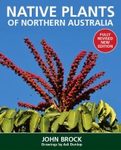About this book
As the shortcomings of purely synthetic approaches to biochemical discovery and development are becoming more apparent, a renaissance of interest in the chemistry of natural products as sources for new compounds is occurring. A unique approach to natural products chemistry, Botanical Miracles: Chemistry of Plants That Changed the World relates applications of plant extracts to the historical progress of civilization. It focuses on selected plants from around the world, connecting their stories and properties to the development of modern marvels such as medicinal compounds, nutrition products, beverages, perfumes and organic pigments. Each chapter describes a particular group of plant extracts from various perspectives, including their chemistry, interest and value to man and historical background. The ends of the chapters pose challenging questions.
Introducing plants that are emerging into more prominent roles in human life and addressing current challenges, Botanical Miracles presents a fascinating point of entry to the chemistry of important natural products. It examines plants and their extracts through the key functional groups, building blocks and concepts of organic chemistry. Botanical Miracles provides, in a single source, information and learning opportunities of value to a wide range of individuals involved in the fields of chemistry, medicine, nutrition or cosmetics whether they be students, educators, researchers or those who simply wish to extend their horizons.
Contents
Introduction
- Aims and Purpose
- Importance and Role of Natural Products
- Organic Chemistry
Medical Marvels
- Introduction
- Central America’s Humble Potato!
- Europe Solves a Headache! Emergence of Aspirin
- Attacking Malaria: A South American Treasure (but Not Gold) and a Chinese Miracle
- A Steroid in Your Garden
- Africa’s Gift to the World
- Saving the Pacific Yew Tree
Modern Miracles of Foods and Ancient Grains
- Introduction
- Rediscovering Traditional Grains of the Americas: Chia and Quinoa
- Foods of the Fertile Crescent: Ancient Wheat
- Asian Staple: Rice
- Chinese Cordyceps: Winter Worm, Summer Grass
- Garlic and Pungent Smells
Beverages
- Introduction
- Tea: From Legend to Healthy Obsession!
- Cocoa (Cacao): Food of the Gods
- Coffee: Wake Up and Smell the Aroma!
- Maca from the High Andes in South America
Euphorics
- Introduction
- Morphine: A Two-Edged Sword
- Cannabis and Marijuana
- Coca and Cocaine
- Tobacco: A Profound Impact on the World
Exotic Potions, Lotions and Oils
- Introduction
- A Plant from the East Indies: Camphor
- Biblical Resins: Frankincense and Myrrh
- European Lavender
- Global Aloe
Colorful Chemistry: A Natural Palette of Plant Dyes and Pigments
- Introduction
- Our World of Green Plants: Human Survival
- Saffron and Carotenoids: Yellow and Orange Dyes
- Woad (Isatis tinctoria) and Indigo
- Red Dyes from Henna, Dyer’s Bugloss and Madder
- Reversible Colors in Flowers, Berries and Fruit
Customer Reviews
Biography
Raymond Cooper is a visiting professor at Hong Kong Polytechnic University. He earned his PhD in organic chemistry from the Weizmann Institute in Israel. His dissertation researched the ancient wild wheats of the Middle East, examining their germinating properties and chemical profiles. After completing a postdoctoral fellowship at Columbia University, New York, he spent 15 years in drug discovery research of plant and microbial natural products in the pharmaceutical and biotechnology industries. He then moved to the nutraceutical and dietary supplements industry to develop botanicals from traditional Chinese medicine including ginkgo, cordyceps, red yeast rice, green tea and many other botanical medicines. He is a Fellow of the Royal Society of Chemistry in the United Kingdom, an honorary visiting professor at the College of Pharmacy, University of London, and a member of the American Pharmacognosy Society. He has published over 120 research papers, edited five books and coauthored the book Natural Products Chemistry: Sources, Separations and Structures. He is an associate editor of the Journal of Alternative and Complementary Medicine and received the American Society of Pharmacognosy 2014 Varro Tyler Award for Contributions to Botanical Research.
Jeffrey Deakin earned a first class honors degree in chemistry from the University of London followed by a PhD in physical chemistry from the University of Cambridge. He has headed the chemistry and physics departments in grammar and comprehensive schools in the United Kingdom. He was a founding member and non-executive director of a multi-academy educational trust, formally approved by the Department for Education in the UK, which aims to secure and sustain school improvement by providing leadership and support, by working with governing bodies to strengthen their leadership and strategic delivery and through contracted work with school leaders and their teams. At the same time he was also the chairman of the governing body of one of the largest academies in the secondary sector of education within the United Kingdom. He is a Fellow of the Royal Society of Chemistry in the United Kingdom and is also a member of the Curriculum and Assessment Working Group at the Royal Society of Chemistry which is reviewing the national curriculum in chemistry in each of the four home nations of the United Kingdom of Great Britain and Northern Ireland.



































